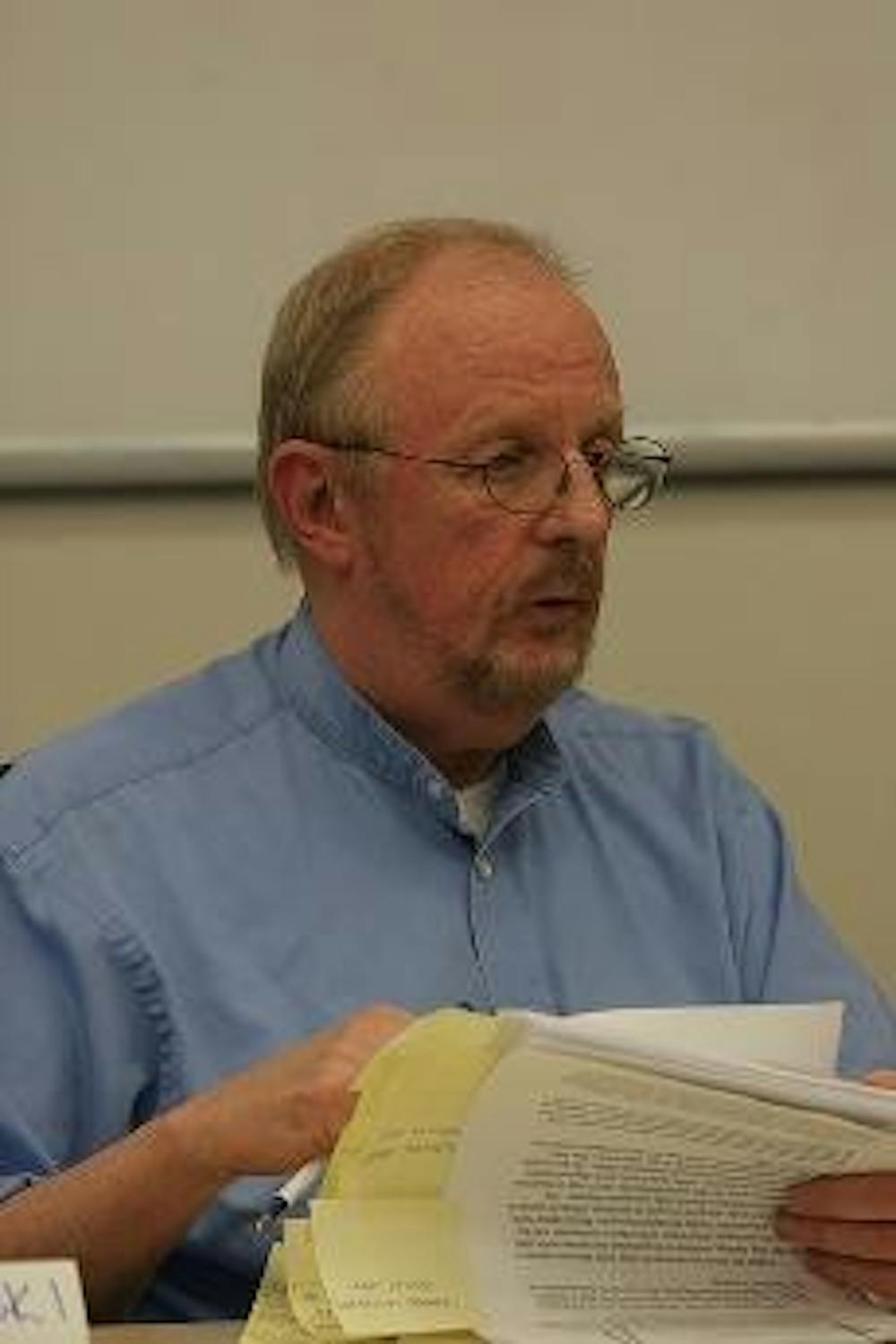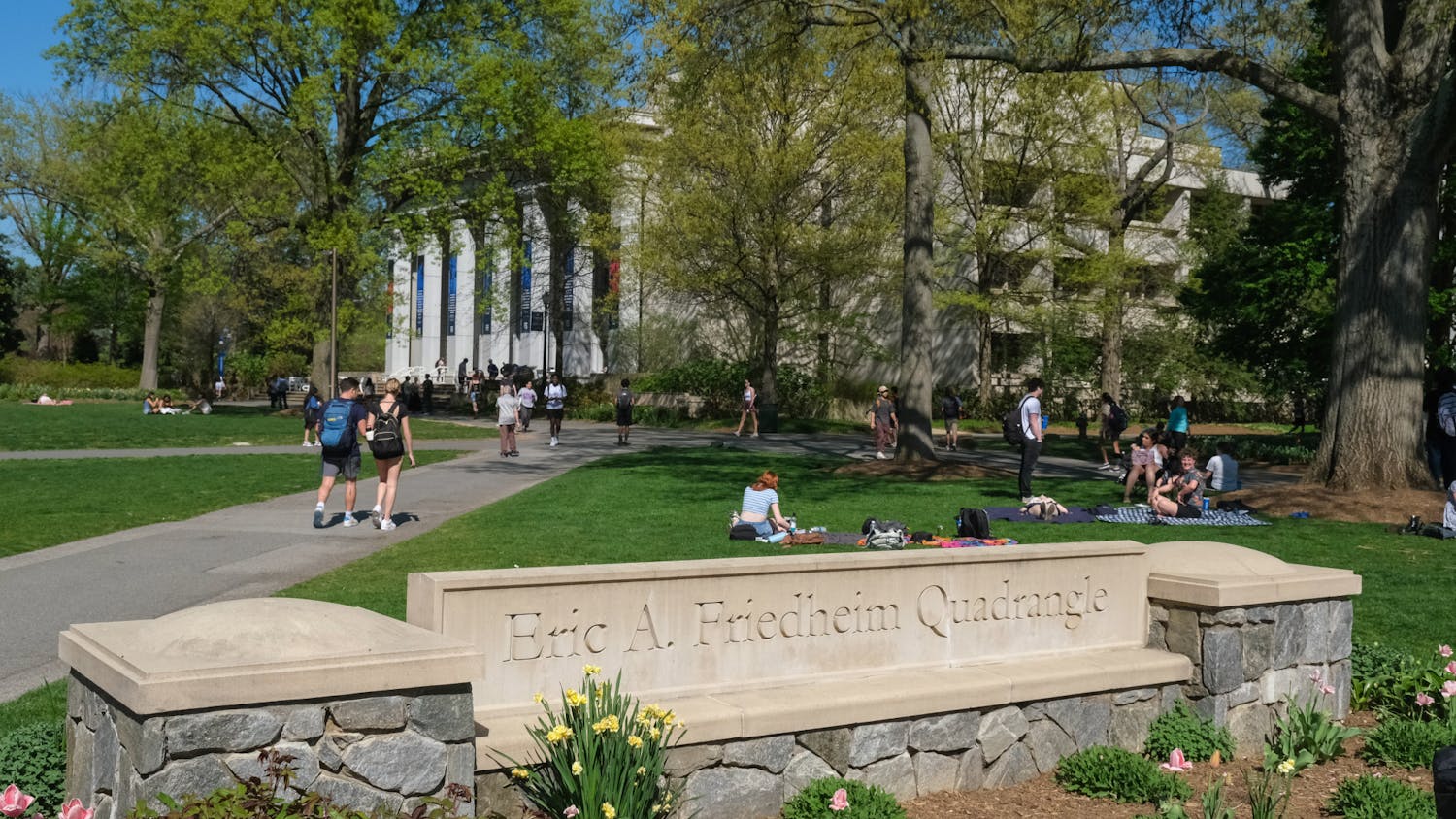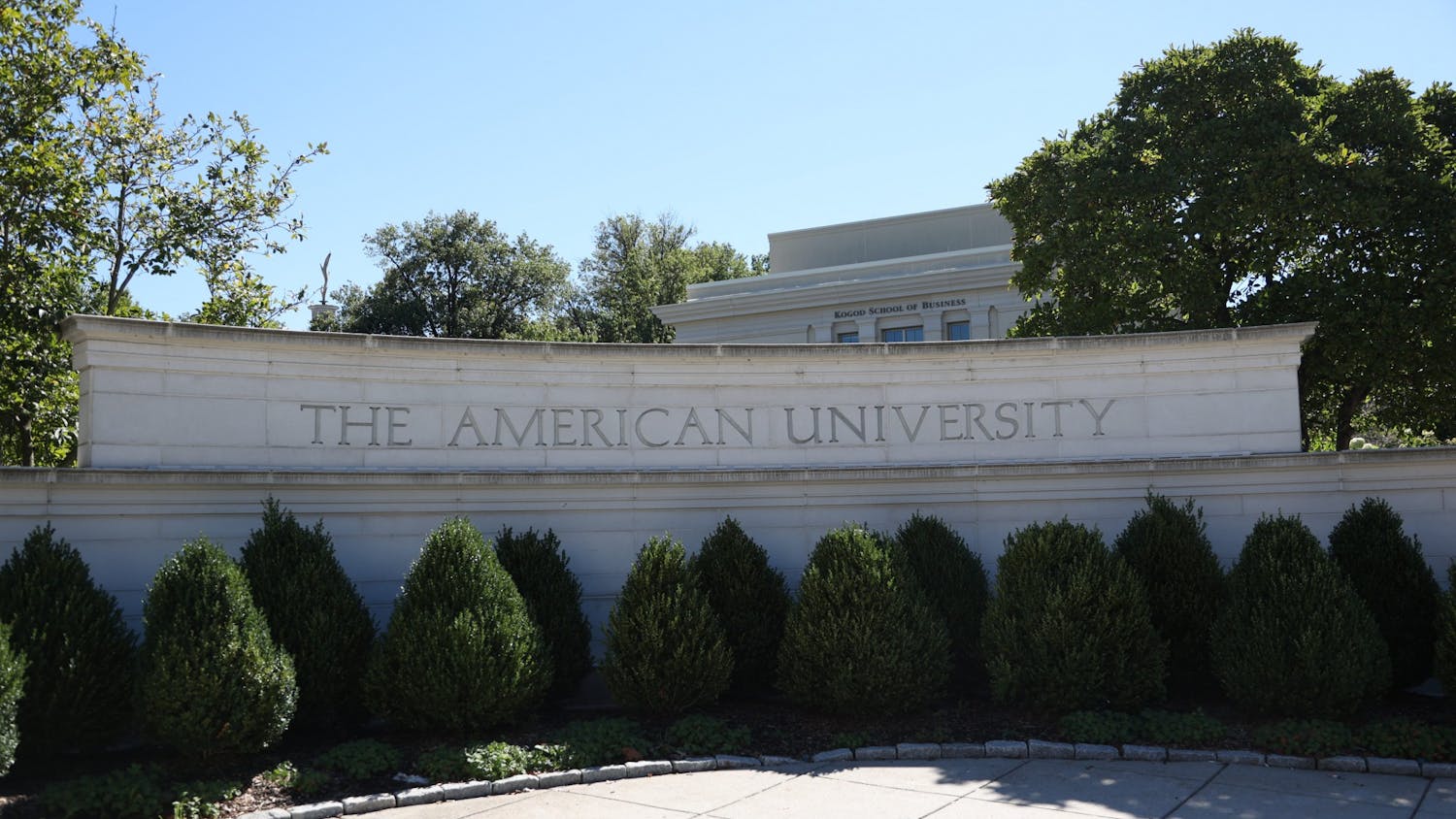The greatest risk AU students currently face is the potential existence of a large burial site of unexploded World War I-era munitions in the area, Buzz Bailey, a local attorney, said during a panel discussion in Mary Graydon Center Tuesday night.
Panelists focused on the U.S. military's use of the university's property as a chemical weapons testing site between 1917 and 1918.
"We have found pure lewisite, pure mustard and pure arsine gas right next to AU on Glenbrook Road," said Ken Shuster of the Environmental Protection Agency. "We know that some [chemical munitions] were buried here - but the big mother load we still have not yet found."
Approximately $11.3 million-worth of chemical ordinates from the Army's on-campus experimental station are still unaccounted for. That figure reflects the weapons' inflation-adjusted value, Bailey said.
After the United States began to take part in World War I in 1917, the AU board of trustees wrote a letter to President Woodrow Wilson offering the campus and its buildings to the U.S. government to aid the war effort, according to Charlie Bermpohl, a writer for The Northwest Current who has followed the Army Corps of Engineers investigation of Spring Valley for several years.
The land the military used included 90 acres of university property and 500 acres of privately owned farmland adjacent to AU, Bermpohl said.
The AU area site represents only one of 2,700 Formerly Used Defense Sites - or military training sites - that are known to have unexploded munitions on them, according to Shuster.
More than 250 sites are suspected to have chemical munitions; the AU Experimental Station is one of these sites, he said.
"Unfortunately, when the military turned these lands over, they did not clean them up," Shuster said. "They did not even investigate them to determine what contaminants may exist."
Between 1917 and 1918, the Bureau of Mines and the Army's Chemical Warfare Service developed and tested approximately 600 gases at AU they intended to use overseas, he said. These included mustard and arsine gases, phosgene and a new mustard agent called lewisite.
According to James E. Girard, chairman of AU's chemistry department, lewisite is an arsenical material with an LD50, or median lethal dose, that is 100 times more potent than regular mustard.
"[The CWS] sent a letter to all the chemical companies in the [United States] and the universities saying, 'Identify please all the worst, most toxic chemicals you have ever encountered and send them to us,'" Shuster said. "They collected those chemicals [at AU]."
The Army used several methods to test the weapons, Bermpohl said. In one method, it placed soldiers or animals - such as dogs, cats or horses - in a field and launched a chemical mortar at them.
"Soldiers were ordered to stand in the gas until it became unbearable," he said. "Then they could either put on their gas masks or run."
In 1993, Congress assigned the U.S. Army Corps of Engineers to clean up Spring Valley after workers who were installing a sewer at 52nd Court uncovered buried military munitions. The Corps' dig has since expanded to several other properties within the Spring Valley neighborhood, both adjacent to and within AU's borders, according to Shuster.
"I think [the Corps] has done a pretty good job in trying to identify on the campus where those types of materials were, and they've been removed," Girard said.
Bailey said the Corps is cleaning up around campus because it is legally obliged to do so under the Superfund law, which Congress enacted in 1980 to establish a federal response mechanism to protect public health from hazardous substances.
"The military doesn't get off free for contaminating," he said. "The military is subject to the same laws as everyone else"





